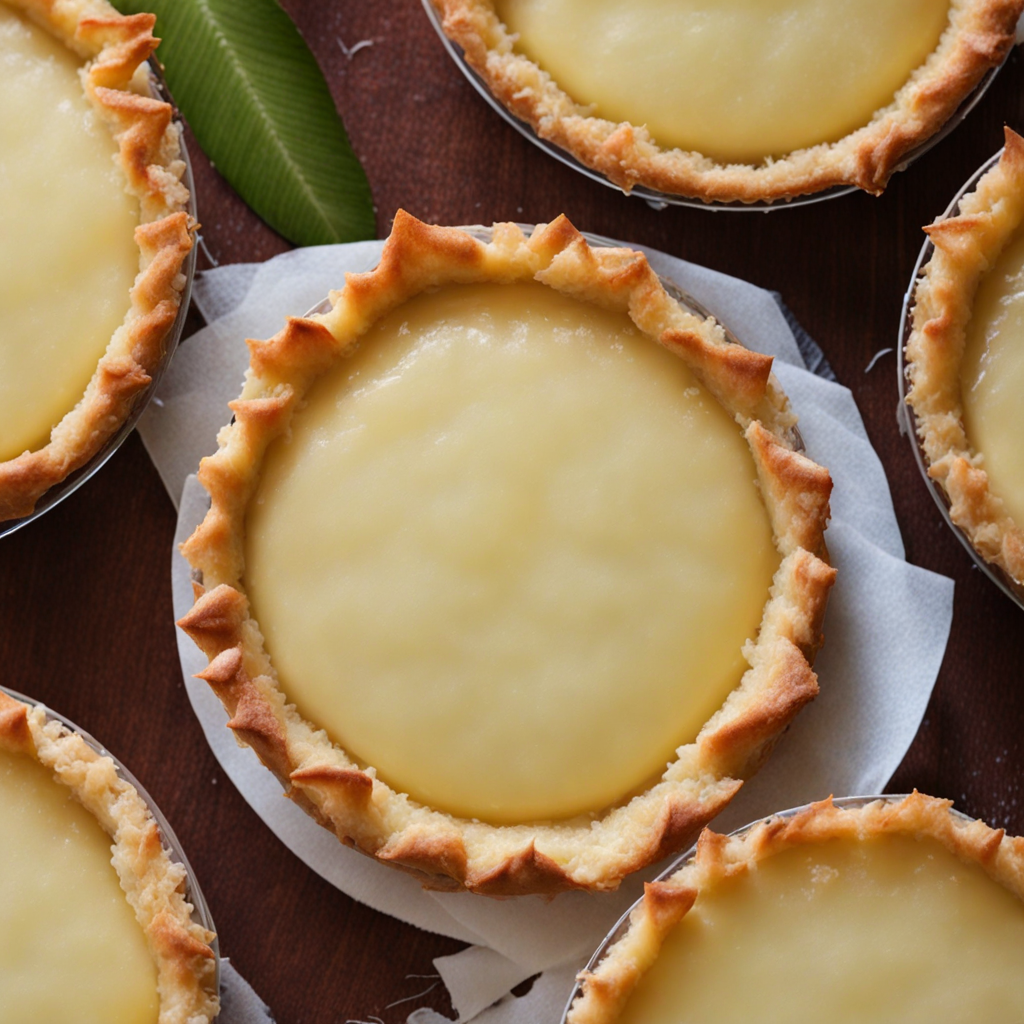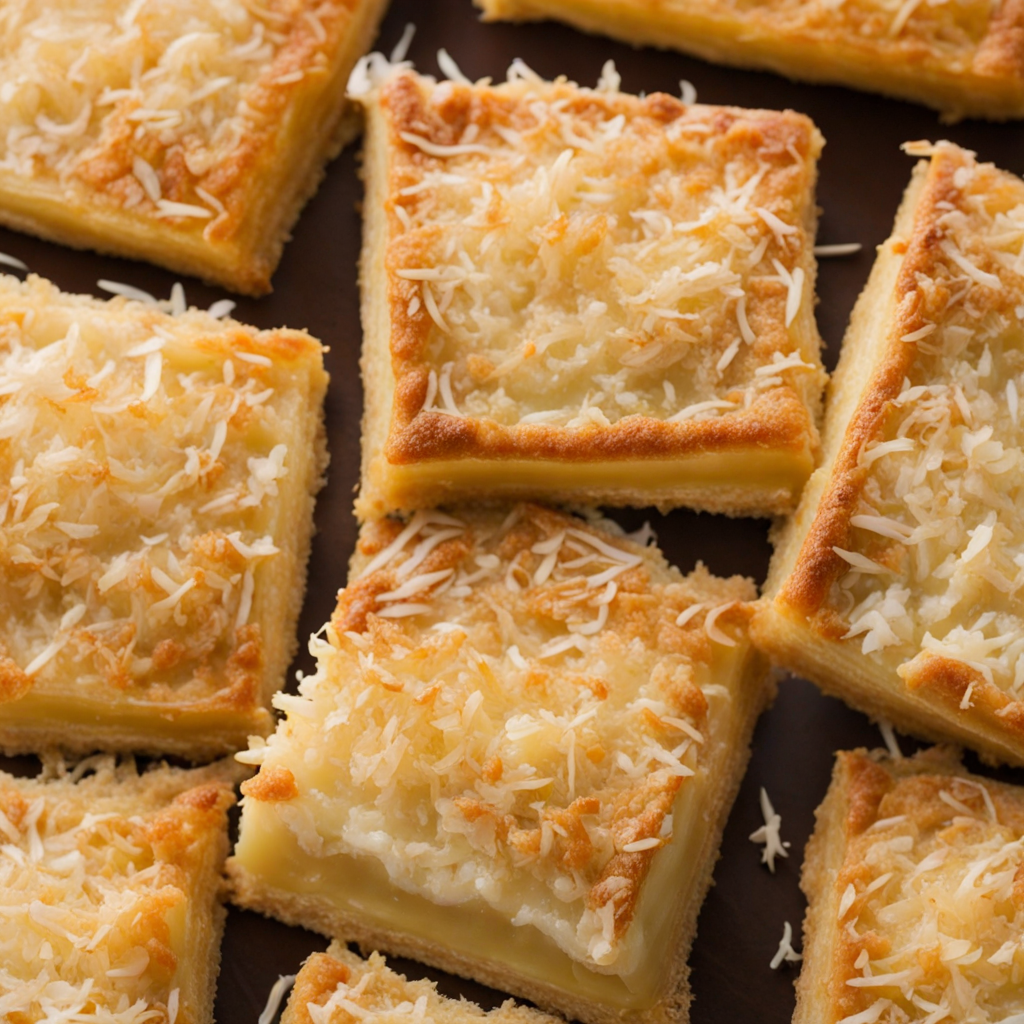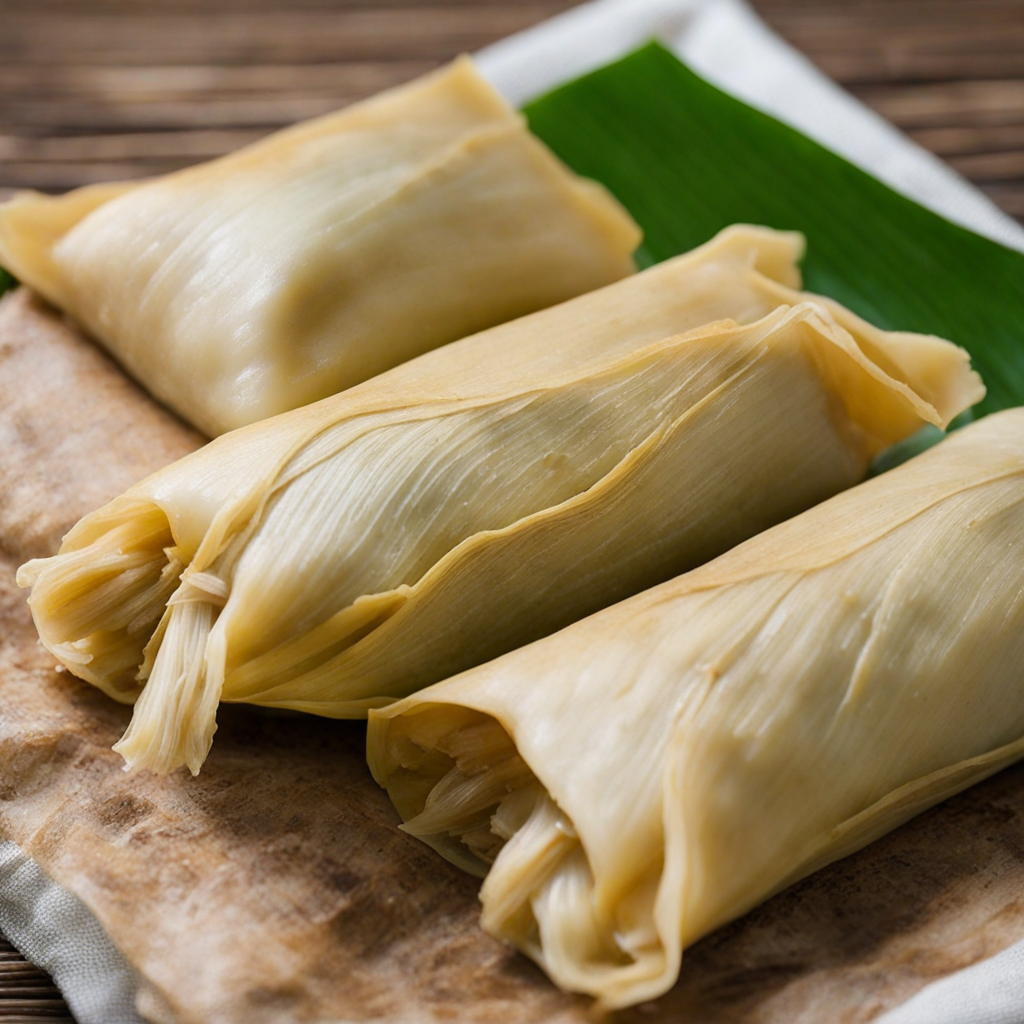Coconut Tart
Coconut Tart is a delightful dessert that encapsulates the tropical essence of Belize. This indulgent treat features a buttery, flaky crust that cradles a rich coconut filling, made from freshly grated coconut, sugar, and eggs. The combination of textures—from the crispness of the pastry to the creamy coconut center—creates a tantalizing experience for the palate. Each bite is a harmony of sweet and nutty flavors, showcasing the vibrant culinary culture of Belize, where coconut is a staple ingredient. The filling of the Coconut Tart is often enhanced with a hint of vanilla or a splash of rum, which elevates its flavor profile and adds a depth that complements the natural sweetness of the coconut. As the tart bakes, the filling transforms into a custard-like consistency with a golden hue, while the crust becomes beautifully browned and slightly crisp. The aroma that fills the kitchen during baking is simply irresistible, inviting anyone nearby to indulge in this beloved dessert. Served warm or at room temperature, Coconut Tart is often enjoyed as a delightful finish to a meal or as a sweet snack throughout the day. It pairs wonderfully with a scoop of vanilla ice cream or a dollop of whipped cream, which adds a touch of creaminess and balances the sweetness of the tart. Whether you’re exploring the flavors of Belize or simply seeking a new dessert to try, Coconut Tart is a must-try that promises to transport you to a sun-kissed paradise with every bite.
How It Became This Dish
The History of Coconut Tart in Belize #### Origins Coconut tart, a beloved dessert in Belize, is deeply rooted in the country’s rich history and multicultural tapestry. The origins of the coconut tart can be traced back to the indigenous peoples of Belize, particularly the Maya, who have cultivated coconuts for centuries. These early inhabitants utilized coconuts not just for food, but for a variety of purposes including tools, utensils, and even construction materials. The coconut palm, often referred to as the "tree of life," was essential to their survival and provided a source of nourishment and sustenance. As European colonizers arrived in the 16th century, they brought with them their culinary influences. The introduction of new baking techniques and ingredients began to meld with local practices, creating a unique culinary landscape. The British, in particular, played a significant role in the evolution of Belizean cuisine during the colonial period. Their penchant for baked goods and desserts encouraged the local population to experiment with the ingredients at hand, leading to the creation of the coconut tart. #### Cultural Significance Coconut tart holds a special place in the hearts of many Belizeans, transcending mere taste to embody cultural identity and community. This dessert is often associated with celebrations and gatherings, particularly during holidays, family reunions, and local festivals. For many Belizeans, the preparation and sharing of coconut tart is a cherished tradition passed down through generations, symbolizing the importance of family and community ties. The tart itself is a wonderful representation of Belize’s diverse cultural influences. Its primary ingredient, coconut, reflects the Caribbean and Central American heritage, while the baking methods used echo British traditions. This fusion of flavors and techniques is a testament to the multicultural fabric of Belize, where Creole, Garifuna, Maya, and Mestizo cultures converge. The coconut tart serves as a reminder of the resilience and adaptability of the Belizean people, showcasing how they have embraced various influences to create a culinary identity that is distinctly their own. #### Ingredients and Preparation Traditionally, coconut tart consists of a flaky pastry crust filled with sweetened grated coconut, sugar, eggs, and a hint of vanilla or nutmeg. The simplicity of the ingredients belies the complexity of flavors that emerge during the baking process. The fresh coconut flavor is often enhanced by the addition of lime zest or even a splash of rum, adding depth and richness to the dessert. The preparation of coconut tart is often a communal affair. Family members gather in the kitchen to help with grating the coconuts, mixing the ingredients, and rolling out the dough. This process not only strengthens familial bonds but also creates a sense of shared heritage, as stories and traditions are recounted while preparing the dish. Once baked, the tart emerges with a golden, crispy crust and a sweet, chewy coconut filling that delights the senses. It is often served warm or at room temperature, and can be accompanied by a scoop of vanilla ice cream or a drizzle of fresh cream to elevate the experience. #### Evolution Over Time As Belize has evolved over the years, so too has the coconut tart. The advent of globalization and increased access to diverse culinary influences has led to innovative variations of the traditional tart. In contemporary Belize, you might find coconut tarts infused with tropical flavors such as pineapple or mango, or even versions that incorporate chocolate or spices from other cultures. In urban areas, bakeries have emerged that specialize in traditional Belizean pastries, including coconut tart, catering to both locals and tourists seeking an authentic taste of Belize. This commercialization has brought coconut tart into the spotlight, allowing it to gain recognition beyond Belize’s borders. It is increasingly featured in food festivals, culinary competitions, and tourism campaigns, further solidifying its status as a national treasure. The rise of the internet and social media has also played a significant role in the evolution of coconut tart. As Belizeans share their recipes and experiences online, the dessert has found its way into the homes of people around the world, creating a global appreciation for this delightful treat. Food bloggers and culinary enthusiasts have embraced the coconut tart, often experimenting with new flavors and techniques, while still honoring its traditional roots. #### Modern-Day Significance Today, the coconut tart is not just a dessert; it is a symbol of Belizean culture and heritage. It represents the blending of different cultures, the importance of family and community, and the resilience of the Belizean spirit. Many Belizeans living abroad continue to prepare coconut tart as a way to connect with their roots, sharing the flavors of their homeland with new generations. Coconut tart also plays a role in promoting Belize’s culinary tourism. Visitors to Belize are often eager to sample local delicacies, and coconut tart has become a must-try item on many food itineraries. From local markets to upscale restaurants, the tart is showcased as a quintessential Belizean dessert, allowing tourists to engage with the local culture through its flavors. #### Conclusion The history of coconut tart in Belize is a rich tapestry woven from indigenous traditions, colonial influences, and modern innovations. It is a dessert that encapsulates the spirit of Belize, celebrating its diversity, resilience, and communal ties. As coconut tart continues to evolve, it remains a beloved staple in Belizean kitchens, a symbol of cultural pride, and a delectable reminder of the power of food to connect people across generations. Whether enjoyed at a family gathering, a local festival, or a cozy café, each bite of coconut tart is a taste of Belizean heritage—a sweet reminder of the past, present, and future.
You may like
Discover local flavors from Belize







